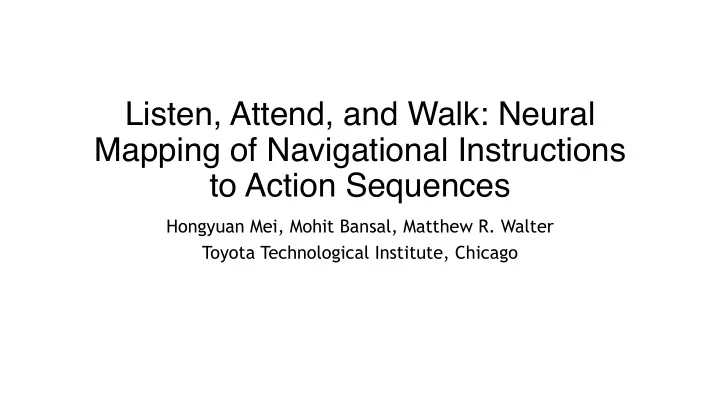

Listen, Attend, and Walk: Neural Mapping of Navigational Instructions to Action Sequences Hongyuan Mei, Mohit Bansal, Matthew R. Walter Toyota Technological Institute, Chicago
Introduction • Neural sequence-to-sequence model for direction following
Introduction • Learn correspondences between instruction and actions using an alignment-based LSTM • End-to-end differentiable sequence-to-sequence model
Model architecture
Model architecture • Inference over a probabilistic model • Neural encoder decoder model with attention
Model architecture • Bidirectional LSTM to encode instruction
Model architecture • Multi level aligner: High level (hidden states of LSTM) + low level (input words) • One layer neural perceptron • Intuitively, better match the salient words in input sentence (e.g., “easel”) directly to corresponding landmarks in the current world state y(t) used in decoder
Model architecture • LSTM decoder • Output P is the conditional probability distribution over actions • E is an embedding matrix • Trained using negative log likelihood of demonstrated action
Experiments • SAIL route instructor dataset • World state (y(t)) encodes local observable world at time t, encoded as a concatenation of a bag-of-words vector for each direction (forward, left, and right).
Results
Ablation results
Visualization
Recommend
More recommend